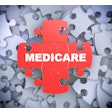
Radiologists have not only the right but a duty to communicate findings directly to patients who are interested in knowing their diagnostic results, according to a clinical perspective published in the March issue of the American Journal of Roentgenology.
"If we know the finding, whether it's good or bad, it's our duty to tell the patient if the patient wants to know," lead author Dr. Ian Amber, from Pennsylvania Hospital in Philadelphia, told AuntMinnie.com. "It's wrong to hide behind a traditional, old-school view of radiology that says radiologists need to stay in the background."
 Dr. Ian Amber from Pennsylvania Hospital.
Dr. Ian Amber from Pennsylvania Hospital.
Direct disclosure of radiologic findings to patients is important for all categories of results, despite the predominant view among referring physicians that good diagnostic news is appropriate for radiologists to share and bad diagnostic news is not, wrote Amber and colleague Dr. Autumn Fiester of the University of Pennsylvania School of Medicine (AJR, March 2013, Vol. 200:3, pp. 1-6).
"[An] objection often raised by referring physicians is that radiology training does not prepare radiologists to communicate findings, especially in how to deliver bad news," they wrote. "Although we acknowledge that all physicians could be better trained in the art of communication, we are unconvinced that radiologists receive significantly less quality training in this aspect of medical care than practitioners in other specialties, such as surgery."
Amber and Fiester note three arguments against radiologists disclosing negative findings:
- Negative results will cause the patient to demand information on treatment and prognosis that the radiologist does not have.
- The referring clinician has a logistic support system that the radiologist does not have to ensure appropriate referral and follow-up for a given condition.
- It is emotionally easier for patients to receive bad news from a provider with whom they have an established and long-standing relationship.
The first argument assumes that referring physicians will have the required expertise to answer such questions, which isn't necessarily the case, Amber and Fiester wrote. The second concern overlooks the fact that specialists already refer patients back to their primary providers for disease treatment and management. And the third is based on a patient care model that's hard to come by these days.
The idea that it's easier emotionally for patients to receive bad news from a provider they have a relationship with "harkens back to an idyllic past in which patients would be cared for over decades by the same general practitioner," the authors wrote. "Managed care, specialization in medicine, frequent changes in insurance coverage, and large group practices have all but ended this type of primary care relationship."
In any case, studies have shown that patients want to know their imaging results. A survey found that 87% of patients wanted to know their diagnostic findings as soon as possible, regardless of the severity of the results, Amber and Fiester wrote. But not all radiologists are comfortable speaking to patients directly.
"Typically radiologists call the referring doctor to either discuss results or request permission to talk to the patient," Amber said. "But we're specialists just like any other. You don't hear about gastroenterologists getting permission from a referring doctor to talk to the patient about colonoscopy results."
New paradigm
Amber and Fiester propose a model for radiologist-patient communication with guidelines based on diagnostic confidence -- a sliding scale based on the definitiveness of imaging results, instead of on their severity. This diagnostic confidence scale consists of a four-tiered continuum that runs from "highly suggestive" to "indeterminate."
"This model focuses on diagnostic clarity on the grounds that patients ought to have timely access to definitive information about their health within the limits of the study that was provided, regardless of whether that information is positive or negative," Amber and Fiester wrote.
How should direct communication between radiologists and patients be implemented? Multiple patient interactions can affect workflow, and there are follow-up logistics as well as medical liability issues, according to the authors.
"The best way to start is with patient-centric modalities, such as fluoroscopy and ultrasound," Amber said. "It would be easy to add another check box to the preimaging questionnaire, asking the patient if they'd like to speak to a radiologist about their results. As for legal issues, I don't see any reason radiologists [should consider themselves more vulnerable to lawsuits] than other consulting physicians."
If a doctor-patient relationship is already in place or can be established, then the radiologist has the same rights to patient interaction -- including direct communication of findings -- that all physicians have, Amber and Fiester concluded.
"Ethically, it's our duty to communicate with patients directly if they ask," Amber said.




















